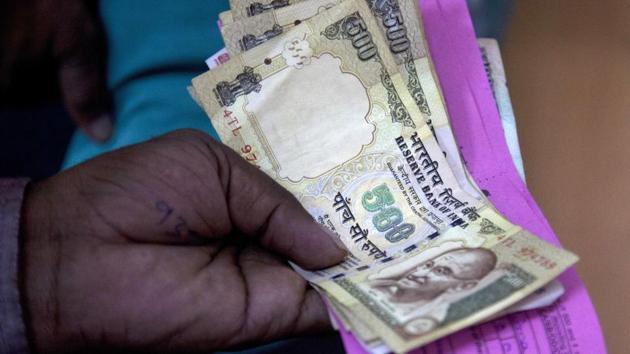Rewind 2016: India fastest growing economy, but will be remembered for note ban
India’s economy was one of the fastest growing economies in the world in the first half of the financial year. With favourable macro-economic indicators, the country’s economic growth stood at 7.2%.
The year 2016 will be a momentous one for various reasons.

India’s economy was one of the fastest growing economies in the world in the first half of the financial year. With favourable macro-economic indicators, the country’s economic growth stood at 7.2%.
For the first time, a monetary policy framework was put in place. Moreover, two important legislations were passed.
In August, the Rajya Sabha passed the Goods and Services Tax (GST) Constitutional Amendment Bill that was already approved by Lok Sabha last year. This clears the way for the implementation of the uniform indirect tax regime in the country.
Secondly, the government approved the bankruptcy code that replaces a string of archaic legislations with a modern contemporary law, allowing easy exits to companies.
But the year 2016 will be most remembered for the NDA government’s shock demonetisation of high-value notes. The move has significantly slowed down the growth engine.
Read | Why were Rs 1000, 500 notes demonetised? RBI refuses to answer RTI query
On November 8, Prime Minister Narendra Modi announced the withdrawal of Rs 500 and Rs 1,000 currency notes comprising 86% of the cash circulation. This led to an acute cash crunch. While the move was taken to weed out black money from the system, it impacted several sectors of the economy.
Though the Opposition attacked the government, saying the country was in a state of economic emergency, finance minister Arun Jaitley said the growth was on track.
“We are extremely grateful to the people of India who have supported the move of demonetisation … Life insurance, tourism, petroleum consumption, mutual fund investment has increased during this period,” Jaitley said.
“This is a spring board year laying the foundation for economic progress in the coming years with more sustainable accountability and economic activity,” noted economist Rajiv Kumar said.
The government also launched the four-month window for the income disclosure scheme, providing a chance to all black money holders to come clean. Moreover, the government launched the Pradhan Mantri Jan Kalyan Yojana – the second amnesty scheme – while the demonetisation drive was on.
“In one word, I would call this year eventful ... macroeconomic conditions remain healthy and we had a good monsoon. But this year, the story would revolve around demonetisation and this has offset a few positives,” DK Joshi, chief economist, Crisil told Hindustan Times.
While India’s exports market remained a matter of concern, trade deficit declined to $53.2 billion as against $78.2 billion in the corresponding period of previous year.
Read | Reality check: 50 days on, demonetization still a mixed bag across India
Subdued global oil prices helped India in reducing its current account deficit – the difference between the inflow and the outflow of dollars. CAD narrowed to 0.1% of GDP from April to June.
Investments this year remained weak, despite efforts by the government to improve the ease of doing business in the country. Despite repeated pleas to India Inc, companies shied away from investing.
Despite high expectations, the Ease of Doing business report, released by the International Finance Corporation, placed India at 130 — just a notch above last year’s ranking.
Meanwhile, the government’s fiscal deficit target of 3.5% of GDP for the current fiscal is in range.
However, the telecom spectrum auction did not yield the desired results, while the Seventh Pay Commission will lead to an additional Rs 1.02 lakh-crore outflow for the government. The government has already provided Rs 25,000 crore for bank recapitalisation.





